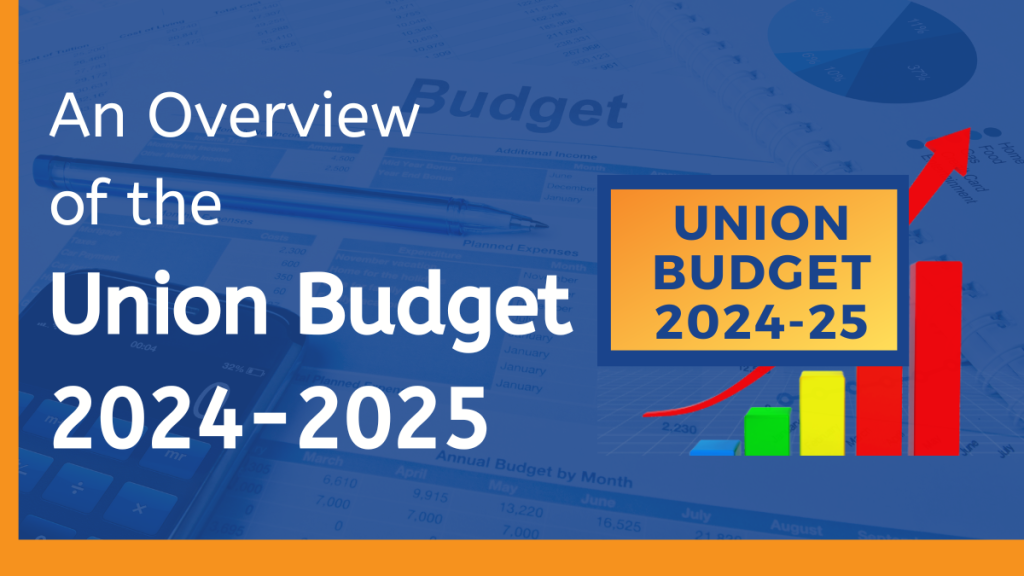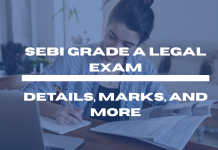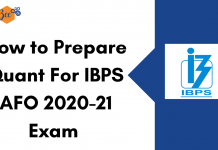The Union Budget for 2024-2025, recently outlined by Nirmala Sitharaman, the Finance Minister of India on July 23, 2024, is a detailed plan that aims to boost sustainable economic development through various avenues. This year’s budget is also part of India’s well-thought-out strategy of stockpiling resources to absorb global blows. It is created in a way that supports the Reserve Bank of India’s policy of flexible inflation targeting and entails the employment, skill development, agriculture, and rural development. The budget involves several investments towards education, infrastructure, and women’s development, and aims to provide tax exemption to individuals and reduce corporate taxes. The main aim of all this effort is to provide ample opportunities to, and make development inclusive for every class of the population of the nation, in order for India to develop.
The budget is focused on digitalization and helping small businesses. This includes a new Credit Guarantee Scheme for MSMEs and the setting up of E-Commerce Export Hubs, to boost the digital infrastructure and international competitiveness of Indian MSMEs. The most allocations are still directed towards social welfare–enabling more and more people to access affordable housing under the Pradhan Mantri Awas Yojana and bolstering women’s and youth empowerment schemes. Another flag-ship initiative dedicated to farming PM-KISAN also continues, with a review of progress to date on the improvement mechanisms in the works.
The tax simplification measures, and initiatives in renewable energy and climate finance to prize commitment over tokenism for progressive thinkers are some of the reflections that are tagged during this announcement. Here is an overview of the highlights of the newly proposed Indian government’s budget for the year 2024.

Union Budget 2024-2025 Key Highlights
The Union Budget presented in the Parliament on July 23, 2024 highlighted some of the key plans for economic growth and stability. Some of these plans are long term developmental projects while others look to focus on some of the major aspects of India’s development pointed out during the current Government’s election campaign. We will be taking a close look at the key aspects of the Union Budget 2024-2024 below:
Fiscal Prudence and Economic Stability
In the 2024-2025 Federal Budget, finance experts recommend reducing public expenditure as one of the steps to a fiscal deficit target of 4.9 per cent. It is part of the current work under way in the area of fiscal consolidation, which is meant to get the deficit reduced by 2025-26 yet again to 4.5 per cent of GDP. This strategy requires a two-part process, which entails rationalisation of public spending arguably one of the most needed while continuing to invest in key developmental and appropriations like transportation infrastructure and welfare.
That the government is as accountable as they wish the citizens were to them with each inauguration. Measures to elicit such are visible in the first quarter with a tightening of GST levies, a short leeway on direct tax on ultra-high wealth and some cover made available to the medium-term competitor through lump-sum windows for an individual.
Moreover, the budget projected higher tax revenues through greater compliance in direct and indirect taxes, for instance, the GST. These gains build-up on earlier measures of improving tax compliance, by providing greater impetus to the rationalization of GST processes and enhancing tax evasion enforcement systems with the help of big data technologies. The government has now begun to appreciate that building a sustainable long-term fiscal framework and addressing systemic legal loopholes can help to further macroeconomic stability in the Indian economy.
Infrastructure and Urban Development
This year’s budget allocates a record high Rs 11.11 trillion to infrastructure development with a big focus on boosting industrial infrastructure with projects like the Amritsar-Kolkata and Vizag-Chennai Industrial Corridors. Strengthening regional economic development and promoting industrial activities better in multiple locations is the target of the corridors. This is expected to increase local business development and provide a better link.
Another proposal is the establishment of industrial parks in 100 cities, which promotes a symbiotic relationship between industry and the city, thereby reducing pressure on mega cities and promoting economic development and employment opportunities in Tier 2 and Tier 3 cities. The development of industrial parks is meant to be the focal point for manufacturing and economic activities, thereby also ensuring regional balance and reducing urban congestion.
Digital India and MSME Support
The Union Budget 2024-2025 strengthens the Digital India initiative with a special focus on helping Micro, Small and Medium Enterprises (MSMEs), which are crucial to the financial system. A major highlight is the introduction of a loan guarantee program that provides ₹ 1,00,00,00,000(one hundred crore) coverage to facilitate access to capital for small and medium enterprises. The aim of the scheme is to tackle the funding challenges faced by small groups and ensure they can expand and innovate without financial constraints.
In addition, the price range reflects the status quo of E-Commerce Export Hubs, which are designed to help SMEs penetrate international markets. These hubs will provide the necessary infrastructure and support offerings, making it less difficult for smaller organizations to engage in cross-border trade. The government’s emphasis on improving virtual infrastructure and offerings, which include advanced network connectivity and virtual fee systems, is expected to increase the overall efficiency and competitiveness of SMEs and further integrate them into the global financial system.
Social Welfare and Inclusive Growth
The social welfare agenda in the Union Budget 2024-2025 is extensive, focusing on key areas such as housing under the Pradhan Mantri Awas Yojana, enhanced educational access and facilities for women and youth, and substantial investments in rural development projects. These initiatives aim to promote inclusive growth and uplift underprivileged sections of society. The following are some of the inititatives under the social welfare and inclusive growth scheme.
- Housing under Pradhan Mantri Awas Yojana: The Pradhan Mantri Awas Yojana (PMAY) aims to build three million houses under the Union Budget 2024-25, thereby substantially addressing housing aspirations in both urban and rural areas. This ambitious scheme aims to provide answers to affordable housing, specifically targeting the economically weaker sections and corporations with low profits. A great feature of PMAY is its emphasis on women empowerment, with a huge percentage of houses being registered in the names of women from the circle of related individuals, promoting gender equality in property ownership. In addition, the program includes cash incentives for beneficiaries, including home loan interest subsidies, which make home ownership more affordable.
- Empowerment of Women: The Union Budget 2024-2025 introduces several tasks aimed at increasing girls’ participation through better training and staffing. Key measures include increased funding for women’s hostels, which will provide safer and more affordable accommodation for girls in education or employment outside the home. The price range also allocates resources for skills packages tailored to girls, equipping them with important competencies to enter and thrive in a variety of industries. In addition, provisions for clean access to academic loans are highlighted, reducing financial barriers to better training for girls. Together, these projects aim to create a more inclusive and fairer environment, encouraging another group of women to participate and be empowered.
- Rural and Agricultural Support : Finance maintains its assistance to the agriculture sector through programs like PM-KISAN, which provides direct financial assistance to farmers, ensures stable earnings and helps mitigate the effects of fluctuating market expenditures. In addition, PM Fasal Bima Yojana offers crop insurance, defensive farmers in opposition to potential losses due to natural bolts, pests or diseases. The finance further emphasizes rural infrastructure development with a focus on improving connectivity and market access through better roads and logistics networks. This increase in infrastructure is expected to facilitate smoother and greener supply of agricultural produce, thereby improving market access and profitability for rural farmers.
Union Budget 2024-2025: Tax Reforms and Revenue Generation
The tax reforms within the Union budget for 2024-2025 are aimed more closely at simplifying the tax system and easing the tax burden on people and companies. Key adjustments include raising the income tax exemption limit to ₹ 7 lakh, increasing the presumptive tax threshold for small groups and professionals, and retaining the reduced corporate tax rate for new production agencies. Here are some of the key takeaways under the new reforms in the Union Budget 2024-2025.
- Increase in Income Tax Exemption Limit: The Union Budget 2024-25 has increased the profit tax exemption limit to ₹ 7 lakh, providing substantial relief to low-income earners. The aim of this adjustment is to reduce the tax burden on individuals, thereby increasing disposable profits and encouraging patron spending. By raising the exemption threshold, the government aims to simplify tax compliance and make the tax instrument extra inclusive, benefiting a larger section of the population. Moreover, this measure is in line with the broader monetary objectives of supporting demand and supporting the monetary boom.
- Increase in the Presumptive Taxation Threshold: The budget increases the assumed tax threshold for small corporations and professionals, simplifies tax filing tactics and reduces compliance fees. This alternative simplifies the tax obligations for corporations with turnover up to a precise limit. Doing so will allow them to pay tax entirely based on an assumed profit margin instead of keeping detailed accounts. This measure is particularly useful for micro and small companies as it reduces the administrative burden and costs of tax compliance, thereby selling the ease of doing business and inspiring entrepreneurship.
- Maintaining a Lower Corporate Tax Rate: The budget maintains a reduced corporate tax rate of 15% for new manufacturing companies, a cycle designed to stimulate commercial growth and attract funding. This reduced tax charge is part of a wider method to enhance India’s competitiveness as a manufacturing hub and encourage domestic and foreign investors to set up new manufacturing facilities in the country. By offering a more favorable tax regime, the government wants to stimulate job creation, technological advancement and general financial improvement in line with the ‘Make in India’ initiative.
| Tax Slab | Tax Percentage |
| 0-3 lakh rupees | NIL |
| 3-7 lakh rupees | 5 per cent |
| 7-10 lakh rupees | 10 per cent |
| 10-12 lakh rupees | 15 per cent |
| 12-15 lakh rupees | 20 per cent |
| 12-15 lakh rupees | 30 per cent |
Union Budget 2024-2025: Climate and Energy Initiatives
The Union Budget 2024-2025 will introduce some important measures that are quite significant for energy security and environmental sustainability. Here are some key aspects of the said initiatives below:
- Renewable Energy: The Solar Rooftop Mission was introduced as part of the Pradhan Mantri-Surya Ghar Muft Bijli Yojana. It is a comprehensive initiative designed to promote the adoption of solar energy in the residential, commercial and commercial sectors. By incentivizing the installation of solar panels on roofs, the company aims to significantly reduce energy costs for customers while reducing dependence on non-renewable energy sources. This initiative also includes assistance mechanisms along with subsidies, tax blessings and simplified regulatory approaches that inspire large participation. The broader intention is to create a sustainable electrical environment and contribute to the nation’s weather wishes.
- Climate Finance: The government’s technique to overcome finance involves creating an extra green and transparent framework for budgeting environmental projects. With carbon markets growing, the plan aims to create a carbon credit trading system that can force financing of green technologies and practices. This economic infrastructure is intended to facilitate the flow of capital towards projects that mitigate weather variability, including renewable energy installations and sustainable agricultural practices. In addition, streamlined processes are designed to enhance accessibility and reduce bureaucratic barriers to weather-related investment.
- Energy Efficiency: Promoting energy efficiency includes a range of techniques to optimize resource use and reduce waste in many sectors. Initiatives under this trial consist of promoting advanced technologies, improving building designs and encouraging behavioral changes to reduce energy consumption. For example, there are packages that offer incentives for retrofitting homes with energy-green designs such as LED lights and high-efficiency HVAC designs. In addition, public awareness campaigns and academic packages aim to inculcate electricity-saving behavior in people and companies. The goal is to reduce current energy consumption and reduce greenhouse gas emissions.
These initiatives collectively aim to set a solid foundation for achieving the broader goal of a developed and sustainable India by 2047. The budget’s emphasis on infrastructure, digitalization, social welfare, and environmental sustainability indicates a holistic approach to addressing India’s diverse development challenges.
Employment Schemes for the Youth
The Union Budget 2024-25 presents a comprehensive strategy for boosting youth employment and skill development. Central to this is the Prime Minister’s Package, which introduces three significant schemes. Scheme A offers one-month salary support of up to ₹15,000 to first-time employees, disbursed in three installments. Scheme B incentivizes job creation in manufacturing by providing financial benefits based on EPFO contributions for the first four years of employment. Scheme C supports employers by reimbursing up to ₹3,000 per month for two years for each additional employee. The budget also includes a new skilling scheme aimed at training 20 lakh youth over five years, alongside the upgrade of 1,000 Industrial Training Institutes.
Additionally, a new internship scheme will place 1 crore youth in top companies over five years, enhancing practical experience and job readiness. These initiatives collectively aim to address the skill gap, enhance employability, and foster job creation, thereby supporting the broader goal of inclusive economic growth and development for the country’s youth.
Prepping for Banking Exams with ixamBee
Prospective candidates navigating the competitive terrain of banking exams, including IBPS PO, IBPS Clerk, IBPS SO, SBI Clerk, SBI SO, and SBI PO, need a firm grasp of the exam syllabus to tailor their preparation effectively. In various bank exams, a fundamental understanding of basic financial changes that has occurred with the presentation of the Union Budget is needed, particularly in the General Awareness section. ixamBee is dedicated to offering aspirants resources beyond traditional study materials. The provision of numerous free mock tests, mirroring the actual exam environment, enables candidates to assess their strengths and weaknesses. Additionally, access to previous year papers assists in understanding exam trends and refining strategies accordingly. The expert faculty at ixamBee, comprising experienced educators and industry professionals, ensures aspirants receive high-quality guidance. Interactive live classes, complimentary mock tests, doubt resolution sessions, and personalized feedback further enrich the learning process.
Summing Up
The Union Budget 2024-2025 provides a clear-cut vision for India’s growth, stressing on the fiscal deficit, infrastructure development, and inclusive social welfare schemes. With substantial investments in digitalization, renewable energy, and climate finance, the budget hopes to bring about economic stability and sustainability. By supporting MSMEs, increasing tax reforms, and expanding social programs, it aims to bring equitable development and environmental stewardship. This budget sets a solid foundation for India’s aspirations towards becoming a developed, inclusive, and sustainable economy by 2047.
To help you prepare 50% faster for competitive exams, ixamBee provides free Mock Test Series and all the Current Affairs in English and Current Affairs in Hindi in the BeePedia capsules for GA Preparation. You can also get the latest updates for Bank PO, Bank Clerk, SSC, RBI Grade B, NABARD, and Other Government Jobs.
Also Read
Exploring Career Opportunities for RBI DEPR Officers in the Private Sector
Who Regulated the Stock Market Regulation in India Before SEBI?
UPSC Exam 2024: History, Full Form, Functions & Recruitment













